The American Institute of Architects(AIA)and its Committee on the Environment(COTE)have selected the top ten examples of sustainable architecture and green design solutions that protect and enhance the environment.The projects will be honored at the AIA 2011 National Convention and Design Exposition in New Orleans.
The COTE Top Ten Green Projects program,now in its 15th year,is the profession's best known recognition program for sustainable design excellence.The program celebrates projects that are the result of a thoroughly integrated approach to architecture,natural systems and technology.They make a positive contribution to their communities,improve comfort for building occupants and reduce environmental impacts through strategies such as reuse of existing structures,connection to transit systems,low-impact and regenerative site development,energy and water conservation,use of sustainable or renewable construction materials,and design that improves indoor air quality.
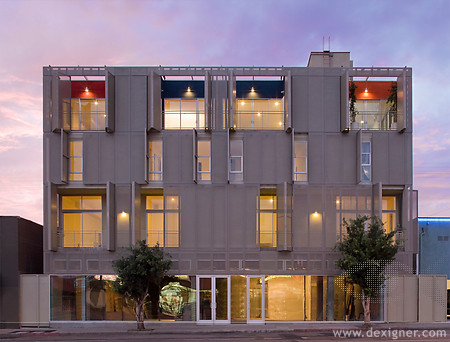
Cherokee Studios,Los Angeles Brooks+ScarpaThis urban infill,mixed-use,market-rate housing project was designed to incorporate green design as a way of marketing a green lifestyle.The design maximizes the opportunities of the mild,Southern California climate with a passive cooling strategy.Together with high-efficiency LED and electric lighting,photo and occupancy sensors,and natural daylighting–energy use was minimized.100%of the total regularly occupied building area is day lit and can be ventilated with operable windows.A combination of cool roof covered in solar panels,green roof,and blown-in cellulose insulation complete an efficient building shell exceeding California Title 24 by 47%.
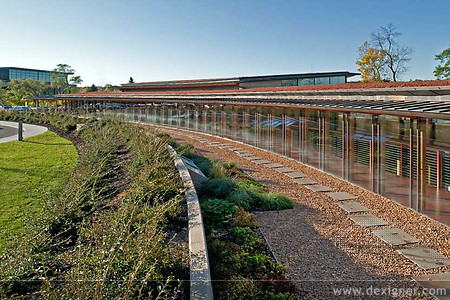
First Unitarian Society Meeting House,Madison,WIThe Kubala Washatko ArchitectsThe 20,000-square-foot addition to the Frank Lloyd Wright-designed national historic landmark Meeting House is approximately 40%more efficient than a comparable base case facility.The new building design features recycled-content and locally-sourced materials.CO2 sensors trigger a ventilation system that provide energy savings when spaces are unoccupied.91%of regularly occupied areas are daylit though Individual lighting controls are contained in all building areas.The addition nearly doubles the building footprint but a vegetated roof and a reduction in parking spaces actually increases the percentage of pervious vegetated surface on the property.
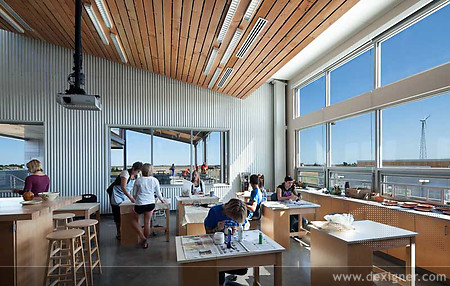
Kiowa County K-12 Schools,Greensburg,KSBNIM ArchitectsFollowing the devastating tornado that destroyed their town and schools,USD 422 chose a bold strategy to combine their schools into a single K-12 facility that would align with the town's sustainable comprehensive master plan.The facilities design optimizes daylighting and natural ventilation in all classrooms,which increases student academic performance/potential and focus.The site and building design reduce the urban heat island effect on Greensburg through open area allocation and diverse landscaping.A 50-kilowatt wind turbine provides a portion of the electricity needs while the remaining power is generated at the wind farm located outside of town.
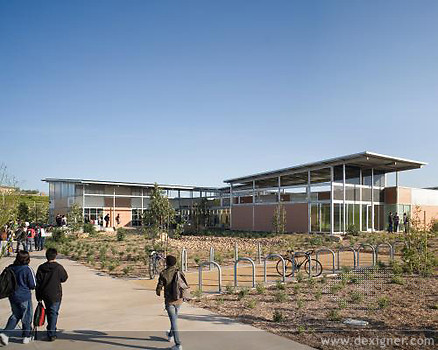
High Tech High Chula Vista,Chula Vista,CAStudio E ArchitectsThis public charter school serving 550 students in grades 9-12 with an approach rooted in project-based learning uses a building management system which integrates a weather station,and monitors and controls the lighting and mechanical systems of the facilities,in addition to the irrigation and domestic water systems.This optimizes thermal comfort,indoor air quality,lighting levels,and conserves energy and water.The facilities reflect the school's guiding principles of personalization,adult-world connection,and common intellectual mission.These principles permeate every aspect of life at HTH:the small school and class sizes,the openness and transparency,sustainable design attributes,and showcasing of student work in-progress.
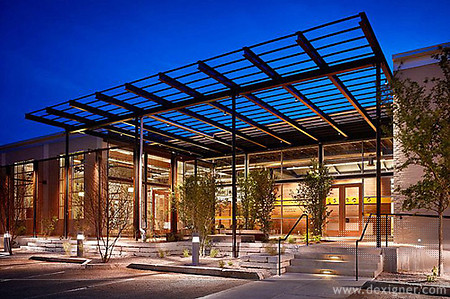
LIVESTRONG Foundation,Austin,TXLake|Flato ArchitectsThe adaptive reuse of a 1950′s built warehouse transformed the concrete tilt-wall building to provide a multi-functional office space for the staff of 62.88%of the materials from the demolition of the dilapidated warehouse were recycled and used in the new design.In order to allow for the most engaging open office environment,the team replaced the roof's center bays with north facing clerestory windows that harvest ample diffused daylight for the core workspace.No toxic chemicals are used in or around the building in accordance with green housekeeping and landscape procedures adopted by the Foundation.Achieving LEED Gold certification,the project reflects the LiveStrong mission"to inspire and empower people affected by cancer."
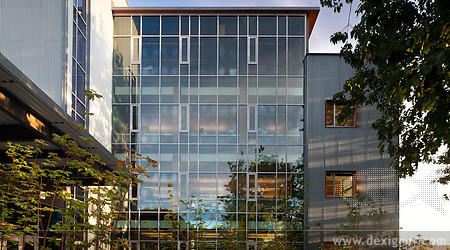
LOTT Clean Water Alliance,Olympia,WAThe Miller|Hull PartnershipWhile most sewage treatment plants are invisible to their communities and separated by a chain link fence,the LOTT Clean Water Alliance Regional Service Center is a visible and active participant in the public life of Olympia.Different strategies were utilized to control solar heat gain,improve the energy performance of the building,and introduce daylight and provide views.Methane generated from the plant's waste treatment process is used in a cogeneration plant to generate electricity and heat.The heat is used directly in the building through a low temperature water loop connected to water source heat pumps,thus eliminating the need for a boiler,cooling tower,or geothermal field.
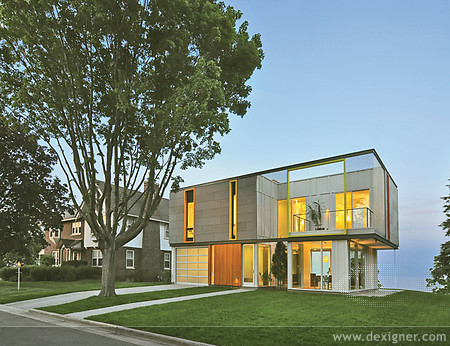
OS House,Racine,WIJohnsen Schmaling ArchitectsOccupying a narrow infill lot in an old city neighborhood at the edge of Lake Michigan,this LEED Platinum home demonstrates how a small residence built with a moderate budget can become a confident,new urban constituent.The local climate,with its very cold winters and hot,humid summers,required a careful mix of active and passive design strategies to ensure proper interior conditioning.Taking advantage of the lake breeze and the site's solar exposure,outdoor rooms were created to reduce the house's depth,allowing for maximum natural cross-ventilation and daylight to wash the inside.The house features a compact structured plumbing system with low-flow fixtures throughout and an on-demand hot water circulating pump,significantly reducing water consumption.
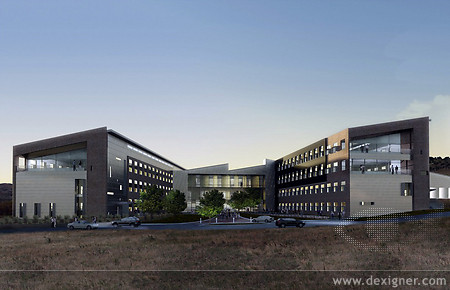
Research Support Facility(RSF)at the National Renewable Energy Laboratory(NREL),Golden,CORNL DesignWith the goal of creating the largest commercial net-zero energy structure in the country,the building is meant to serve as a blueprint for a net-zero energy future and influence others in the building industry to pursue low energy and net-zero energy performance.NREL and Department of Energy's goal is to transform innovative research in renewable energy and energy efficiency into market-viable technologies and practices.Many of the integrated passive design strategies such as daylighting and natural ventilation strongly support both energy and human performance.An open office plan resulted in a higher density workplace reducing the building footprint per person.
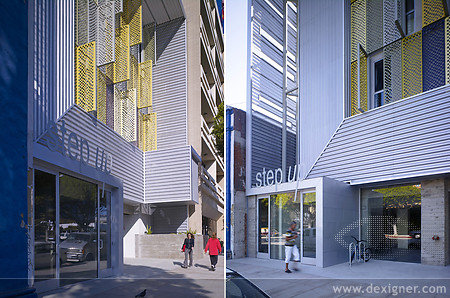
Step Up on 5th,Santa Monica,CABrooks+ScarpaThis mixed-use project provides 46 studio apartments of permanent affordable housing and supportive services for the homeless and mentally disabled population in the heart of downtown Santa Monica.The density of the project is 258 dwelling units/acre,which exceeds the average density of the Manhattan borough of New York City by more than 10%.The building is located in a transit-oriented location with access to community resources and services,providing a healthy living environment for residents and using resources efficiently.Based on California Title 24-2005 published by USGBC on this building is nearly 50%more efficient than a conventionally designed structure of this type.
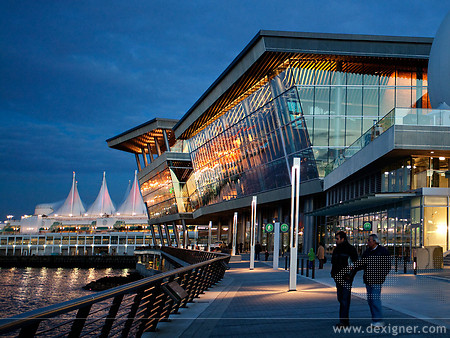
Vancouver Convention Centre West,Vancouver,British ColumbiaDesign Architect:LMN Architects,Prime Architects:DA/MCMAs the world's first LEED Platinum convention center,this project is designed to bring together the complex ecology,vibrant local culture and urban environment,embellishing their inter-relationships through architectural form and materiality.The living roof,at 6 acres it is the largest in Canada,hosting some 400,000 indigenous plants.Free cooling economizers can provide cooling for most of the busy seasons for the convention centre.The heating and cooling is provided by very high efficiency,sea water heat pumps powered by renewable hydro electricity.The interior is fitted throughout with CO2,VOC,and humidity sensors,which can be monitored in conjunction with airflow,temperature,and lighting controls to optimize air quality on a room-by-room basis.





